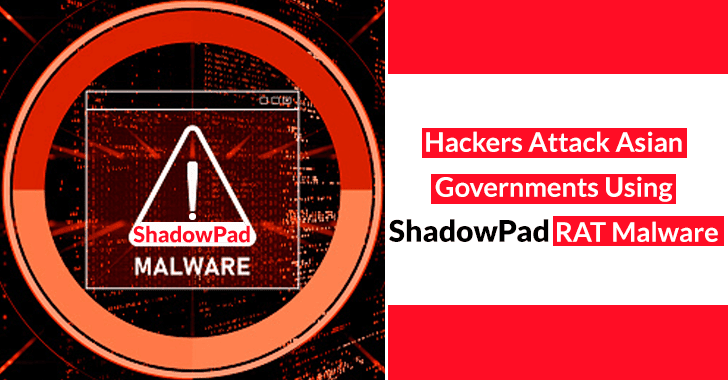Recently, a cyber-espionage activity targeting government institutions in Asia has been identified by security researchers at the Symantec Threat Hunter team.
This activity is being carried out by a distinct group of threat actors which was previously associated with a renowned RAT, “ShadowPad.” A growing number of toolsets have been deployed and used by threat actors in recent campaigns.
Targets
The primary purpose of this current campaign is to target the Asian government and Asian public entities. Here below we have mentioned all the prime targets:-
- Head of government/Prime Minister’s Office
- Government institutions linked to finance
- Government-owned aerospace and defense companies
- State-owned telecoms companies
- State-owned IT organizations
- State-owned media companies
Attack chain
In order to carry out the attack, a malicious DLL is first implanted. An executable file containing a .dat file inside of a legitimate app is launched in order to load this file through side loading.
The Bitdefender Crash Handler executable that was abused by these hackers is 11 years old, which is an example of a legitimate application being abused by hackers.
By taking advantage of this, the threat actors can easily facilitate the direct execution of commands from memory or even execute additional payloads as well. This can be leveraged to execute commands or additional payloads directly from memory.
To steal user credentials from LSASS, the threat actors install the “ProcDump” after establishing backdoor access. It was again possible to side-load the LadonGo penetration testing framework by exploiting DLL hijacking.
Two computers in the same network were exploited by the hackers in order to elevate their privileges through CVE-2020-1472 (Netlogon). Crash Handler was executed by the attackers using PsExec.
Next, the hackers load the payloads from additional computers in the network using the DLL order hijacking trick. Users’ credentials and log files were accessed via a snapshot of the active directory server mounted by threat actors.
Furthermore, exploit attempts were conducted by the threat actors against other machines on the network using Fscan. In particular, leveraging the Proxylogon (CVE-2021-26855) vulnerability to compromise an Exchange Server.
Custom info-stealer used
A previously unseen and extremely powerful information stealer with a lot of features was used in the attack. This information stealer was called Infostealer.Logdatter.
There were many features that seemed to be custom built into this infostealer, which included the following:-
- Keylogging
- Taking screenshots
- Connecting to and querying SQL databases
- Code injection: Reading a file and injecting the contained code into a process
- Downloading files
- Stealing clipboard data
Payloads used
Attackers used the following payloads to carry out their attacks:-
- PlugX/Korplug Trojan
- Trochilus RAT
- QuasarRAT
- Ladon penetration testing framework
- Nirsoft Remote Desktop PassView: A publicly available tool that reveals the password stored by the Microsoft Remote Desktop Connection utility inside .rdp files
- A Simple Network Management Protocol (SNMP) scanning tool
- Fscan: A publicly available intranet scanning tool
- Nbtscan: A command-line tool that scans for open NETBIOS name servers
- FileZilla: A legitimate FTP client
- FastReverseProxy: A reverse proxy tool
- WebPass: A publicly available password collection tool
- TCPing: A publicly available tool that enables pings over TCP
- Various process dumpers
- Various keyloggers
- A number of PowerSploit scripts
The APT41 and Mustang Panda groups that are sponsored by the Chinese state have been linked to this campaign.









